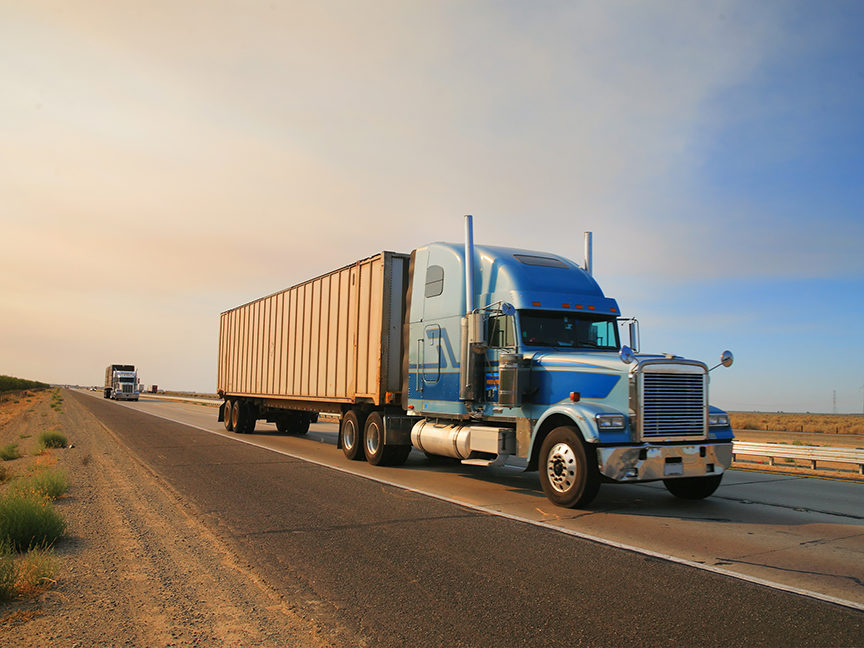
The reality of climate change is prompting global corporations to rewrite their business strategies to meet zero-carbon emissions targets. Greenhouse gases are at the heart of climate-change discussions, with current global economic activity producing carbon dioxide estimated to be 50% over pre-industrialization levels.
Supply chain leaders are facing tremendous pressure from critical stakeholders, environmental groups, customers and shareholders to find ways to reduce GHG output by their factories and distribution partners. According to a study from CSCMP and MIT, 59% of supply chain organizations invested in sustainability throughout 2020, with more investments planned in the years ahead. The companies cited employee welfare and safety, human rights protection and energy savings as their top three concerns with regard to sustainability.
Ongoing supply chain issues continue to plague the heavy-duty truck industry in particular. Original equipment manufacturers (OEMs) have been struggling with the inventories of not just trucks, but also many component parts over the past year, and the shortage of semiconductors has also affected assembly lines for Class 8 buildouts. Couple this with a continued lack of drivers and technicians, and industries that rely on supply chain and transportation are being forced to seek new solutions.
The Impact of Climate Change
In recent years, a growing number of supply chain leaders have taken steps to initiate environmental, social and governance (ESG) plans and goals. Complicating matters further, the U.S. Securities and Exchange Commission recently issued a proposed rule that would enhance and standardize climate-related disclosures provided by public companies.
Under the proposal, registrants must adhere to GHG emissions disclosure requirements within their annual reports (e.g., Form 10-K). In addition, they document their emissions certifications for SEC filings.
This is a critical step, given that commercial vehicles such as medium- and heavy-duty trucks, including tractor-trailers, large pickups and vans, delivery trucks, buses and garbage trucks, produce about 24% of transportation emissions.
A significant industry challenge revolves around answering the question of how to efficiently move the transportation industry toward a carbon-free future. Companies that operate heavy-duty truck fleets want to do what’s right for customers, employees, an environmentally conscious public and shareholders. However, the economics of electric battery technology, hydrogen and other alternative energies aren’t yet viable today for U.S. long-haul transportation, and perhaps won’t be for a few more decades.
Seeking Alternative Fuel Technologies
The most realistic approach to bridging today’s clean-diesel technology into tomorrow’s alternative fuel options is by drawing up an ESG roadmap and seeking support from strategic asset-management partners, to determine future truck procurement policies. This will maximize environmental considerations and move the industry toward alternative fuel technology.
Critical to these companies and their fleets is proper management of the total cost of ownership (TCO) through accurate truck lifecycle cost management (LCM). With advances in asset management and business intelligence, the transportation industry is paying closer attention to trucks' lifecycles, with an eye to driving sustainability and controlling costs.
Rather than extending the truck’s use for several years, companies are turning to fleet-modernization studies and innovative emissions scorecards that scrutinize each truck’s performance data and economic factors, to determine an optimal procurement and disposal strategy.
The emissions scorecard reviews the entire fleet by year, make and model. It provides detailed information about CO2, nitrous oxide and particulate matter emissions, fuel saved in metric tons and gallons, when the truck was replaced, and forecasted savings.
In addition to reducing emissions, proper LCM results in improved safety records, a higher rate of driver retention and a lower TCO.
Actual Data Proves the Difference
A data-driven LCM plan helps corporate fleets make measurable changes in both the financial and environmental bottom line. The average driving miles per gallon for a 500-unit fleet operating a five-year lifecycle is 8.41, while the average for an eight-year cycle is 7.90. Organizations have switched from an eight- to five-year lifecycle, which has resulted in a net total reduction of 2,494,770 gallons of fuel. This will have a significant impact over the next five to 10 years, producing a 6.1% reduction in CO2, or 25,122 metric tons.
Additionally, emissions scorecard data shows that upgrading to a 2024 model year truck from a 2018 model would provide a 16% increase in fuel economy and reduction of CO2 emissions.
Industry-wide change doesn’t happen overnight. The transportation sector has operated under legacy thinking for decades. But as the focus on environmental stewardship has grown in importance, and ESG strategies have become more of a priority, fleets are hearing the message, and making decisions based on real data and metrics.
Hadley Benton is executive vice president of sales at Fleet Advantage, a provider of truck fleet business analytics, equipment financing and lifecycle cost management.







